Leaders of the Pack: Stetson’s Three Florida Governors
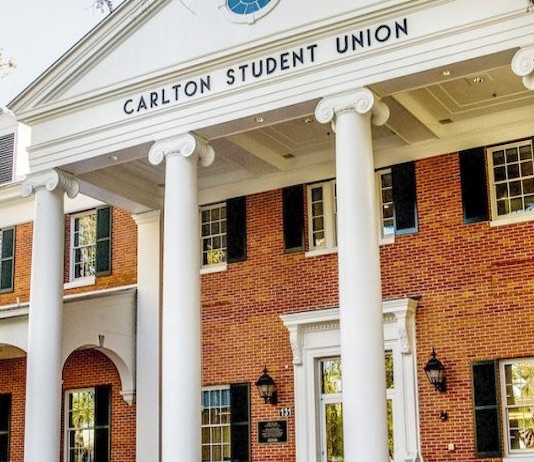

Editor’s note: This article appears in the Spring 2022 issue of Stetson University Magazine, available online and in print.
On Oct. 27, 1972, the Stetson Reporter announced the death of former Florida Gov. Doyle Elam Carlton Sr. The governor’s passing was noted on the last page of the Reporter, far from the front-page headline announcing the possibility of peace in Vietnam and after a story of a debate challenge from the “Stetson People for McGovern” to the “Young Republicans.”
Born in 1885, Carlton’s life must have seemed far removed from the political passion aroused in students by the presidential election of 1972. Yet, as a student at Stetson in the early 20th century, Carlton embraced politics, too. There, he developed the speaking and debating skills that helped forge a successful political career that eventually led to becoming Florida’s head of state.
Carlton wasn’t the only such leader with Stetson ties. Two other governors, William Sherman Jennings and David Sholtz, also had similar connections.
WILLIAM SHERMAN JENNINGS
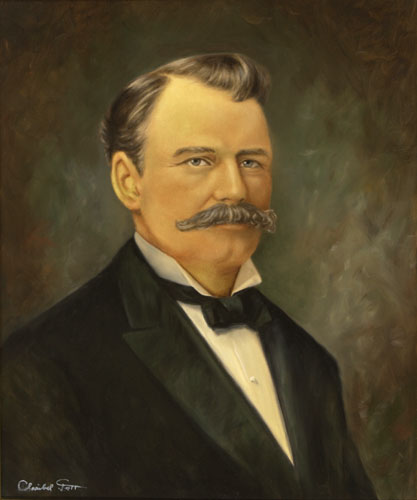
Jennings’ administration was the earliest. Born in Illinois during the Civil War on March 24, 1863, he was a cousin of William Jennings Bryan, the fiery orator and perennial losing Democratic presidential candidate.
Jennings moved to Brooksville, Florida, in 1885. He was elected to the Florida House of Representatives in 1892 and later served as speaker of the House. In 1891, he married May Elizabeth Austin Mann, who proved to be a tremendous political personality in her own right as a leading voice for women’s suffrage and environmental conservation. Jennings won the Democratic primary and the governorship in 1900.
The Jenningses were staunch Baptists. Given Stetson’s close association with the Florida Baptist Convention at the time, the governor’s faith and political prominence made him a perfect candidate for a seat on Stetson’s Board of Trustees, which he joined in 1900 and where he remained until his death in 1920.
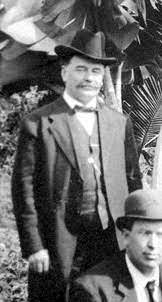
Jennings’ tenure on the board was not without controversy, however. In summer 1901, rumors of an affair between Stetson President John F. Forbes, PhD, who was married, and a female instructor began to spread, engulfing the university in a scandal that absorbed newspaper readers across the state. The episode caused a rift among the faculty and shattered what had once been a solid relationship between Forbes and university benefactor John B. Stetson.
Jennings, in his capacity as a trustee and leading member of the Florida Baptists, supported Forbes’ claim that the accusations against him were false and malicious. Jennings and the board exonerated Forbes, and the Florida Baptists followed suit, proclaiming Forbes, also a prominent Baptist, innocent.
DOYLE ELAM CARLTON SR.
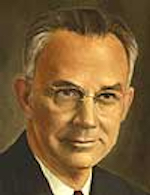
Carlton was a student at Stetson during the Forbes controversy. Born on July 6, 1885, in Wauchula, Florida, Carlton was from a cattle-raising and citrus-growing family, and one of 10 siblings. He entered Stetson as a student in its college preparatory academy in 1902, rooming in the original Conrad Hall that burned down that year. Carlton graduated from the academy in 1905 and from the university in 1909.
Carlton was a model student. He joined the Literary Society, the student newspaper (Weekly Collegiate) and the Glee Club. Carlton became the university’s top student orator. During the summer of 1908, the university put his speechmaking skills to work by having him travel the state to recruit new students. It was also at Stetson that he met Nell Beauchamp Ray, his future wife.
Like Jennings, Carlton was a devout Baptist who did not smoke, drink alcohol or gamble. His commitment to temperance led to his first foray into political activism. In 1910, sponsored by the Anti-Saloon League, Carlton, an alumnus and three Stetson students formed a singing quartet that toured the state, giving performances and speeches in favor of statewide prohibition. After graduating from law school at Columbia University in New York in 1912, he moved to Tampa to practice law and continued to promote prohibition.
Carlton won election to the Florida Senate in 1916. He worked to ratify the 18th Amendment, which instituted Prohibition, and endorsed legislation to strengthen Florida’s child labor laws and implement workers’ compensation. These achievements and his growing civic reputation in Tampa encouraged Carlton to run for governor in 1928. He won the Democratic primary and beat his Republican opponent in the general election.
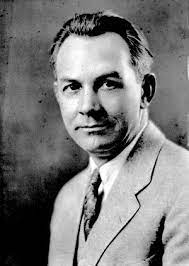
When Carlton entered office in January 1929, Florida was in an economic crisis that had been going on long before the onset of the Great Depression, which occurred later that year. The bust of the Florida Land Boom and the horrendous impact of hurricanes in 1926 and 1928 devastated the lives and livelihoods of countless Floridians. This string of biblical-scale disasters continued in the early months of the administration when a plague of Mediterranean fruit flies infested Florida’s citrus crops. Carlton also had to address the terrible condition of the state’s finances due to a large deficit from previous road projects.
Carlton tried to solve the fiscal crisis by cutting government spending — he laid off state workers and reduced salaries, including his own. He got the state Legislature to increase the gas tax to help counties pay off their large debt and to help fund public education. He cooperated with the federal government to construct massive dikes to prevent future flooding in the Everglades, which had caused so much damage in the previous hurricanes. And he did his best to combat the Medfly epidemic.
By the time Carlton left office in 1933, Florida and the nation were entering the darkest days of the Great Depression. The state had few resources for public assistance and could do little to alleviate the misery of the growing numbers of the unemployed. Yet, Carlton could say he had prevented the collapse of state government in the face of overwhelming difficulties.
DAVID SHOLTZ
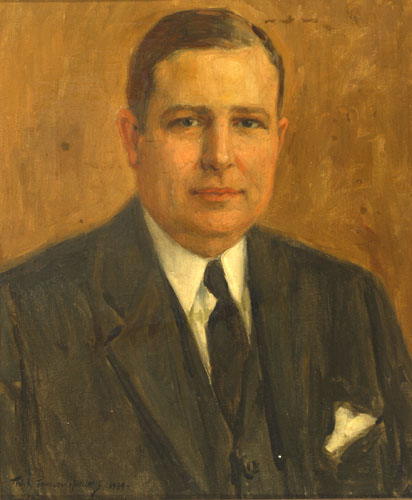
The man who succeeded Carlton was another Stetson graduate. Sholtz was born on Oct. 6, 1891, in Brooklyn, New York. His parents were Russian-Jewish immigrants. Sholtz received his early education in New York and did his undergraduate work at Yale University. While he was at Yale, his father visited Daytona Beach and invested in the city by founding an electric streetcar company and funding other infrastructure projects.
In fall 1914, Sholtz enrolled in the College of Law at Stetson. He had already earned law credits at Yale, so he was only at Stetson for his final year. Like Carlton, he joined the Glee Club. He also became a member of Phi Alpha Delta legal fraternity and Moot Court. His 1915 yearbook entry was glowing: “Our Dave is the Millionaire Kid, and the Yale Grad, and a better fellow was never made: full of Wisdom and Smiles.”
Also described as a young man in a hurry, Sholtz built a successful law practice and got to know Volusia’s business and governing elite. Elected to the Florida House in 1916, he joined the Navy during World War I. In 1925, he married Alice May Agee. In the 1920s, Sholtz served as a state attorney, and as a municipal judge in Daytona Beach, and rose in the ranks of civic and business organizations.
Those associations, combined with a talent for speechmaking and an outgoing personality, made him a gubernatorial prospect by 1932. He won election that year, becoming the only Florida governor of Jewish heritage — although he had converted to Christianity years earlier. During his campaign, he had to fend off anti-Semitic attacks and rumors that he was some sort of New York radical.
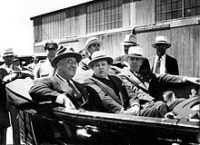
Sholtz followed Carlton’s agenda of lowering taxes and limiting government spending. However, he embraced President Franklin Delano Roosevelt’s New Deal, welcoming federal dollars to fund public works programs. When Roosevelt was almost assassinated in Miami, Sholtz rode with FDR on the train carrying him back to Washington, D.C. His good relationship with the president helped Florida acquire more New Deal investments.
Sholtz worked to provide more money for state welfare programs to assist the vast number of unemployed Floridians. He was instru- mental in applying federal funds to relieve the poor economy of Key West, which was in terrible shape even before the Great Depression hit. He also created the Florida Park Service and the Florida Citrus Commission to conserve Florida’s forests and restore confidence in the state’s citrus industry after the Medfly devastation. His term ended in 1937.
Neither Sholtz nor Carlton ever served in elective office again. They both tried to win U.S. Senate seats but failed. Sholtz and Jennings died of natural causes in middle age, Sholtz at 61 and Jennings at 56. Carlton lived to be 87.
Over the decades, Stetson recognized Carlton’s continued service to the university. He was a trustee from 1919 to 1972 — dedicating the Carlton Union Building in 1957 and establishing the Doyle E. Carlton Award in 1969 to recognize individuals devoted to Christian education, the development of Stetson, and service to the DeLand community and Florida.
Jennings and Sholtz shouldn’t be forgotten, either. Like Carlton, they were leaders at least partly shaped by Stetson. And they were governors who made a difference.
– R. Boyd Murphree ’84
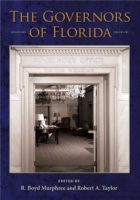
Boyd Murphree ’84 received a bachelor’s degree in history, followed by a master’s degree and doctorate in history from Florida State University. In 1998, he began work as an archivist with the State Archives of Florida in Tallahassee. He left the archives in 2012 to become an assistant editor with the Papers of Abraham Lincoln in Springfield, Illinois. In 2016, Murphree started his current position as a project manager with the University of Florida’s George A. Smathers Libraries. He and Robert A. Taylor coedited “The Governors of Florida,” the first in-depth history of all of Florida’s territorial and state governors, which the University Press of Florida published in 2020. That year, the Florida Book Awards recognized the book with the Phillip and Dana Zimmerman Gold Medal for Florida.



